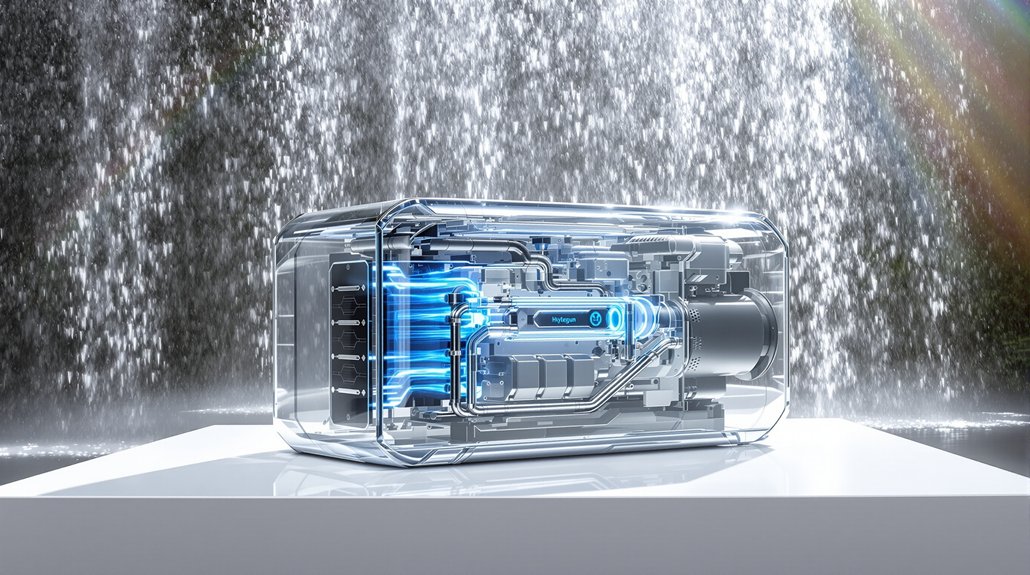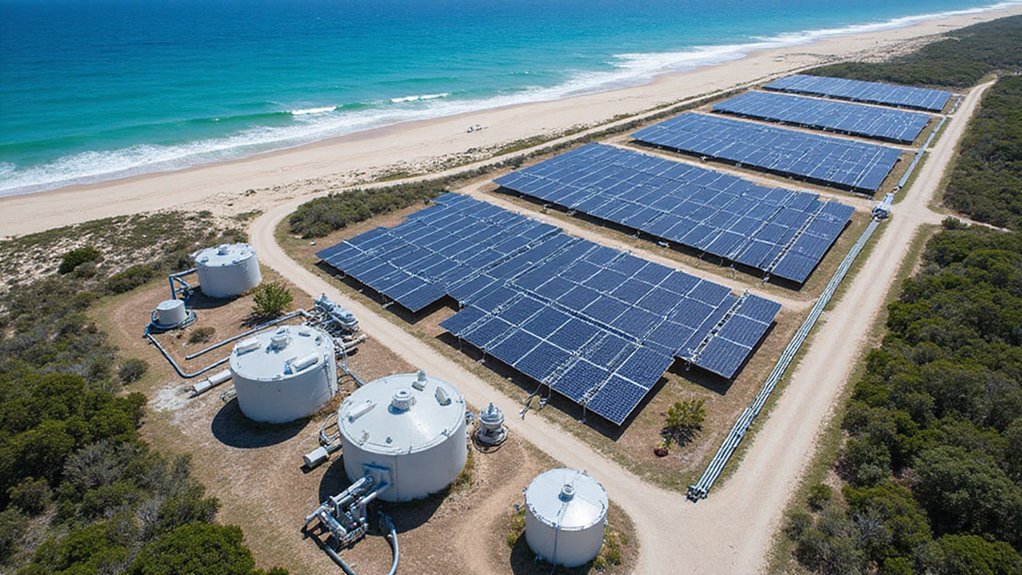The race for cleaner energy has put hydrogen engines in the spotlight as a promising alternative to traditional gasoline-powered vehicles. Currently, there are two main types of hydrogen engines: the Hydrogen Internal Combustion Engine (HICE) and the Hydrogen Fuel Cell Engine. Both offer unique advantages in the pursuit of cleaner transportation.
Hydrogen engines emerge as clean alternatives, with HICE and fuel cell variants each bringing unique benefits to modern transportation.
Hydrogen fuel cell engines operate through an electrochemical process that’s quite different from traditional combustion. They combine hydrogen and oxygen to produce electricity, heat, and water vapor—with no harmful emissions. The electricity powers an electric motor, sometimes charging a small buffer battery. These engines run silently and release only pure water, making them truly zero-emission at the point of use. These Fuel Cell Electric Vehicles (FCEVs) use hydrogen fuel cells to generate electricity rather than traditional batteries.
In contrast, HICEs work more like conventional gasoline engines but burn hydrogen instead. They mix hydrogen with air, compress it, and ignite it with a spark plug. This creates mechanical power through piston movement. These engines require special modifications, including stronger valves, gaskets, and hydrogen-specific fuel injectors to handle hydrogen’s unique properties.
When it comes to power, hydrogen engines don’t disappoint. Direct injection HICEs can achieve up to 15% higher power than gasoline engines. The fuel cell approach delivers a driving experience similar to electric vehicles but with the benefit of quick refueling. With efficiency rates exceeding 75%, hydrogen fuel cells outperform many traditional energy sources while maintaining reliable output.
The environmental impact of hydrogen engines depends largely on how the hydrogen is produced. When made using renewable energy, the entire system can be nearly emission-free. Fuel cell engines produce no local pollutants whatsoever, while HICEs may emit small amounts of nitrogen oxides at high temperatures. Green hydrogen production through water electrolysis using sustainable energy sources like solar or wind power represents the most environmentally responsible approach.
Refueling happens at dedicated hydrogen stations, where the gas is stored under high pressure. The process is quick—comparable to refueling a conventional car and much faster than charging an electric vehicle. However, widespread adoption faces challenges due to limited refueling infrastructure in most regions.
As technology advances, hydrogen engines continue to evolve as a viable path toward cleaner transportation without compromising performance or convenience.
References
- https://www.lhyfe-heroes.com/about-hydrogen/how-does-a-hydrogen-engine-work
- https://www.renaultgroup.com/en/magazine/energy-and-motorization/how-does-a-hydrogen-vehicle-work/
- https://www.lhyfe-heroes.com/about-hydrogen/what-is-a-hydrogen-engine-a-comprehensive-guide-to-hydrogen-powered-technology
- https://www.bmw.com/en/innovation/how-hydrogen-fuel-cell-cars-work.html
- https://en.wikipedia.org/wiki/Hydrogen_internal_combustion_engine_vehicle








